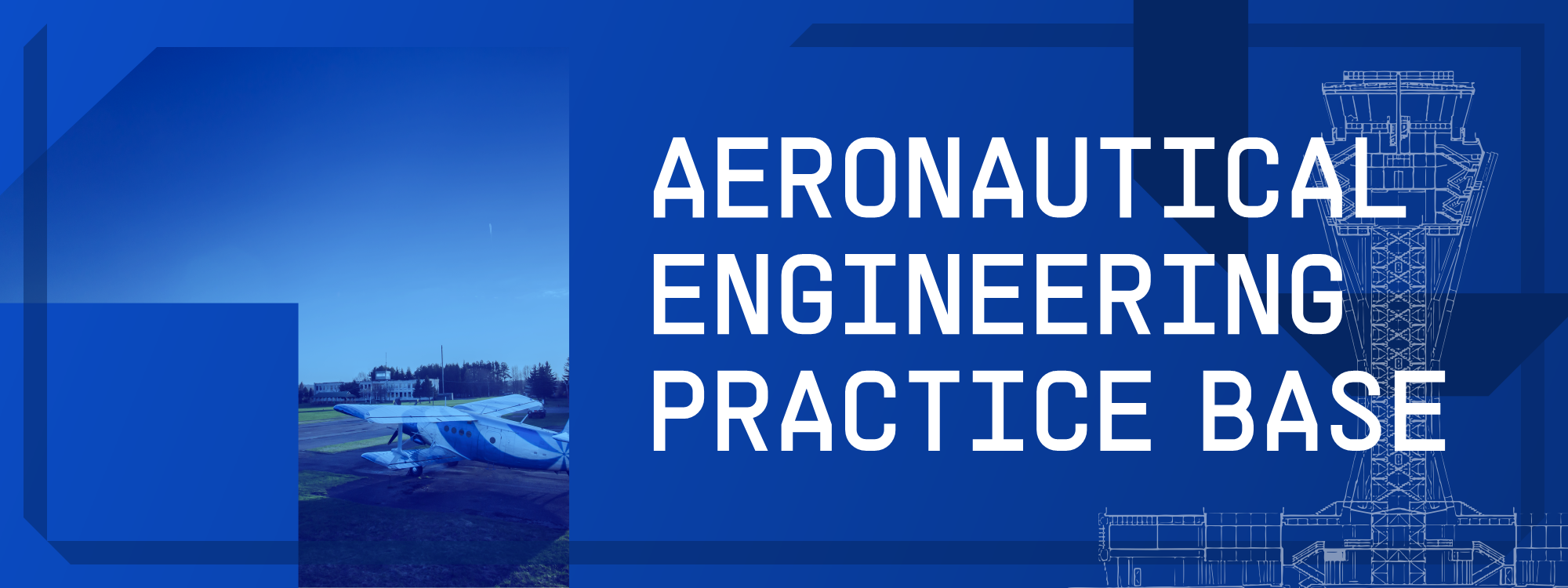
Aeronautical engineering practice base (AIPB) is a department of Antanas Gustaitis Aviation Institute (AGAI), whose main activities are:
- Aircraft maintenance specialists (mechanics and avionics) theoretical and practical training organisation;
- Aircraft maintenance specialists (mechanics and avionics) practical training programme organising, revising and carrying out. (400 academical hours);
- Partnership between university and aviation companies in regards to everything involving students practical training.
The purpose of AIPB is to prepare aviation maintenance specialists (mechanics and avionics), so that after they have finished the university, they would have adequate knowledge and skills to start their career in aircraft maintenance sector. This is achieved by various practical and theoretical trainings.
Aeronautical engineering practice base (AIPB) areas of activity:
Initial training of aircraft systems during lectures
All AGAI faculty specializations (Pilots, Air traffic controllers, aviation mechanical engineering, avionics) students have some form of lectures about aircraft systems, so examining real examples of those systems on installed on our aircraft helps them better understand those systems. For this reason most professors include excursions to AIPB during the course of their subjects. The most common aircraft systems, that are explained using real examples in AIPB during lectures:
1. Powerplant (Engine, propeller/fan, cooling system, injection system, exhaust system);
2. Airframe (Fuselage, wing, empennage);
3. Landing gear;
4. Fuel system;
5. Flight instruments;
6. Electronic instruments.
1. Powerplant (Engine, propeller/fan, cooling system, injection system, exhaust system);
2. Airframe (Fuselage, wing, empennage);
3. Landing gear;
4. Fuel system;
5. Flight instruments;
6. Electronic instruments.
Aircraft structural design laboratory works and course works
Aeronautical mechanics engineering students have a variety of course works and complex projects, during which they need to design and calculate aircraft structural components, such as:
1. Wing and its components (Flaps, slats, spoilers…);
2. Fuselage;
3. Horizontal/Vertical stabilisers;
4.Flight controls (Ailerons, rudder, elevator).
During these projects it is very helpful to have a variety of real structural components to inspect, compare different solutions between different aircraft and chose the initial design inspired by real examples. Lectures about aircraft structural components while showing real examples results in deeper understanding for students, helps them develop their engineering mindset and learn standard technical solutions most commonly used in aviation.
1. Wing and its components (Flaps, slats, spoilers…);
2. Fuselage;
3. Horizontal/Vertical stabilisers;
4.Flight controls (Ailerons, rudder, elevator).
During these projects it is very helpful to have a variety of real structural components to inspect, compare different solutions between different aircraft and chose the initial design inspired by real examples. Lectures about aircraft structural components while showing real examples results in deeper understanding for students, helps them develop their engineering mindset and learn standard technical solutions most commonly used in aviation.
Professional practice
At the start of the practical training students can work in a stress-free environment, feeling confident in themselves while working in a non - EASA part-145 organisation with aircraft that are not airworthy. Practical training is performed in AGAI TLK on aircrafts, such as: Cessna 310, cessna 152, segments and parts of Airbus A320, ATR42 aircrafts. In this stage of practical training students get acknowledged with standard procedures in aircraft maintenance, including tools skills, working with aircraft manuals. Because the aircraft in the laboratory are non-airworthy, it creates a unique opportunity to learn without the risk of consequences for making mistakes.
The second practical training phase begins when the student has gained reasonable skills and knowledge about aircraft maintenance. At this point the practical training moves to Vilnius Tech Kyviškės airfield, where we work on airworthy aircraft. At this stage a certified EASA part-66 licence holder is overwatching and inspecting all the work completed by students. Because this stage of training is being carried out in EASA part-145 organisation, highest standards for work ethics and aviation safety are maintained during the training.
The second practical training phase begins when the student has gained reasonable skills and knowledge about aircraft maintenance. At this point the practical training moves to Vilnius Tech Kyviškės airfield, where we work on airworthy aircraft. At this stage a certified EASA part-66 licence holder is overwatching and inspecting all the work completed by students. Because this stage of training is being carried out in EASA part-145 organisation, highest standards for work ethics and aviation safety are maintained during the training.
-
- Page administrators:
- Laurynas Šišovas
- Virginija Leonavičiūtė
- Karolina Kardokaitė
- Ugnė Daraškevičiūtė


